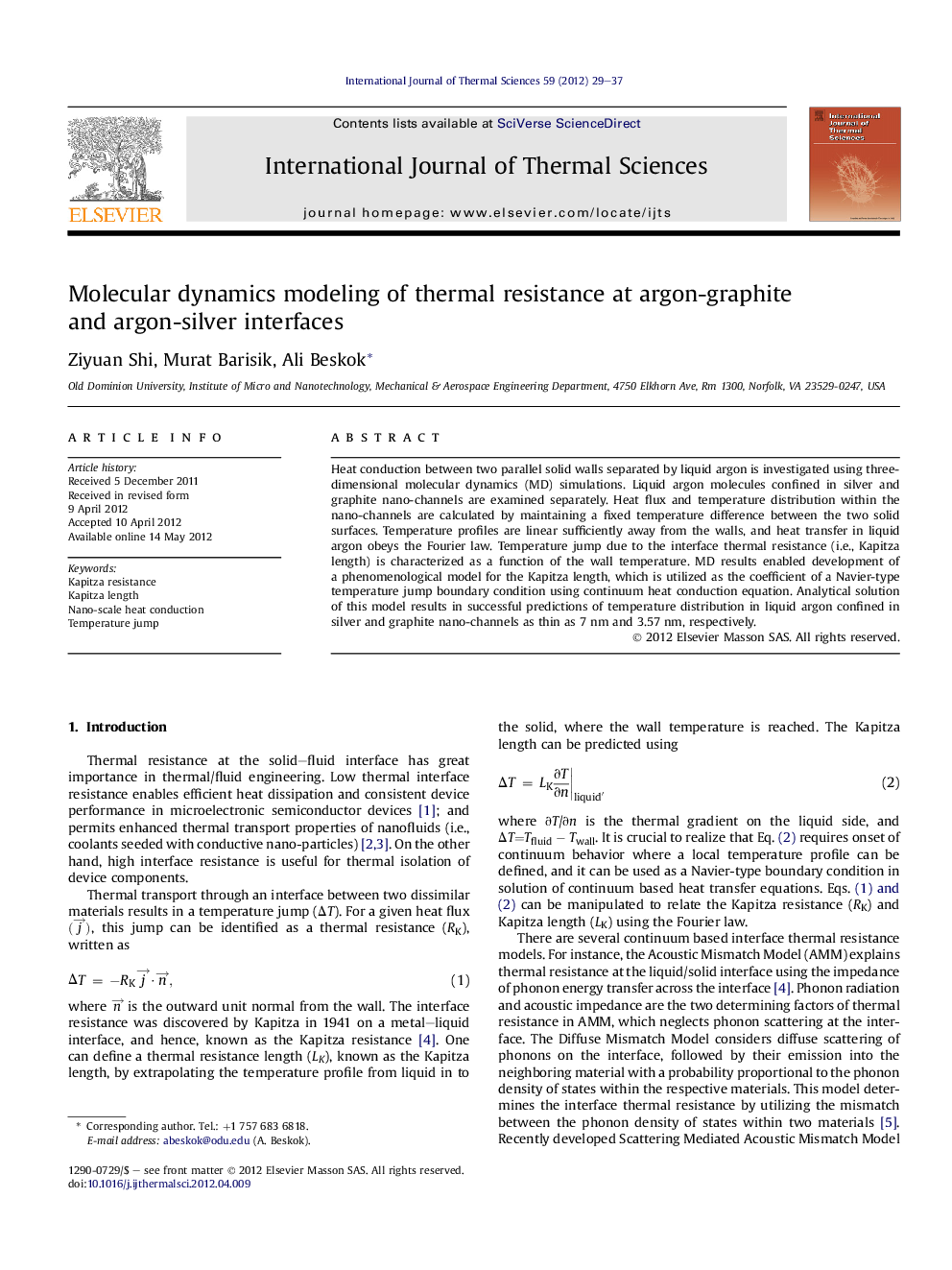| Article ID | Journal | Published Year | Pages | File Type |
|---|---|---|---|---|
| 668873 | International Journal of Thermal Sciences | 2012 | 9 Pages |
Heat conduction between two parallel solid walls separated by liquid argon is investigated using three-dimensional molecular dynamics (MD) simulations. Liquid argon molecules confined in silver and graphite nano-channels are examined separately. Heat flux and temperature distribution within the nano-channels are calculated by maintaining a fixed temperature difference between the two solid surfaces. Temperature profiles are linear sufficiently away from the walls, and heat transfer in liquid argon obeys the Fourier law. Temperature jump due to the interface thermal resistance (i.e., Kapitza length) is characterized as a function of the wall temperature. MD results enabled development of a phenomenological model for the Kapitza length, which is utilized as the coefficient of a Navier-type temperature jump boundary condition using continuum heat conduction equation. Analytical solution of this model results in successful predictions of temperature distribution in liquid argon confined in silver and graphite nano-channels as thin as 7 nm and 3.57 nm, respectively.
► Validates Fourier Law of heat conduction in nano-scale channels filled with liquid argon. ► Investigates Kapitza length at argon-graphite and argon-silver interfaces. ► Develops a phenomenological model for Kapitza length. ► Uses the Kapitza length model in a Navier-type temperature jump boundary condition to predict heat conduction in nano-channels.
